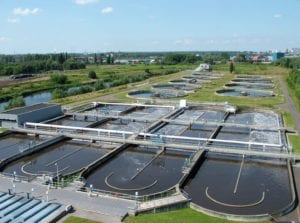A recent study which examines methods for recovering phosphorus from wastewater using mathematical modelling may be the next big thing in efforts to reduce, reuse, and recycle.
Phosphorus is an essential element for human nutrition and development. Without it, the basic cells of plants and animals, and life itself, would not exist. Typically, phosphorus is found in phosphate-containing minerals that are mined — a limited and non-renewable resource. The annual demand is rising quickly. However, once used, phosphorus is difficult to reclaim. In animals (including humans), urine contains phosphorus. Surface water carries large amounts of phosphorus from fields and lawns downstream. The result is phosphorus in water discharged by wastewater treatment plants (WWTPs). “Whatever phosphorus we use and discharge into rivers and oceans is lost to the environment,” says Rolf Halden, professor at the School of Sustainable Engineering and the Built Environment, and director of the Center for Environmental Security, Arizona State University. “WWTPs represent ground zero for addressing the problem of global phosphorus depletion,” says Halden, whose group recently published the study in the Journal of Environmental Quality.A combination approach
Halden and Arjun Venkatesan’s study focuses on a combination approach to treating wastewater. First, enhanced biological phosphorus removal (EBFR) concentrates phosphorus in sludge. Next, chemical treatment helps phosphorus fall out to form struvite, a usable phosphate mineral.The study shows that a typical WWTP could reclaim approximately 490 tons of phosphorus in the form of struvite each year. Conventional methods remove only 40%-50% of P, according to Venkatesan, the study’s lead author.
Reclaimed phosphorus pays off for the environment with less mining for phosphorus and improved surface water health. Phosphorus recovered as struvite can also generate income. The team estimates that the WWTP used in their case study could generate $150 000 in annual revenue from this two-pronged approach. A plant with existing EBFR facilities can recoup the initial expenses in as little as 3 years. “Nearly 367,500 tons per year of phosphorus could be generated with combined EBPR and struvite production,” says Halden, in plants with treatment capacity similar to the one used in the case study. Such a payload can be a welcomed payoff for conscientious communities. -American Society of Agronomy (ASA), Crop Science Society of America (CSSA)







